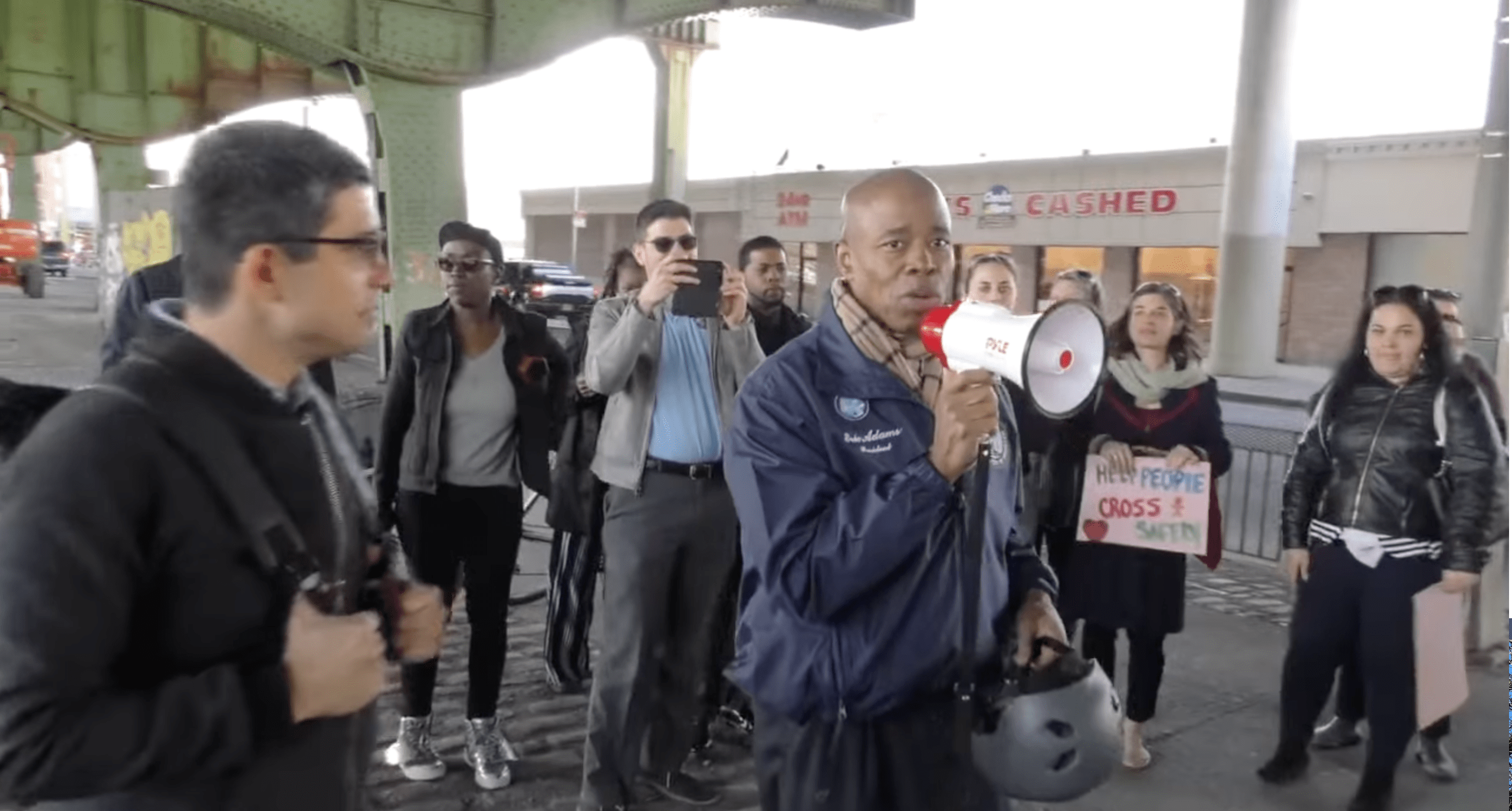 Despite copious subsidized parking at East River Plaza, most customers still walk or take transit to get there. Who could have seen that coming? Image: Curbed
Despite copious subsidized parking at East River Plaza, most customers still walk or take transit to get there. Who could have seen that coming? Image: CurbedIn a surprise to few, the wannabe-suburban East River Plaza big box mall can't fill its 1,428 space parking lot.
As the Wall Street Journal reported this week, Manhattan residents, with their 22.5 percent household car-ownership rate [PDF], are walking or taking transit to East Harlem's Costco instead, even with the lure of subsidized parking. It's exactly the kind of anti-urban, economically wasteful and environmentally destructive mistake that City Planning should have prevented.
East River Plaza was first designed 15 years ago by the Long Island-based Blumenfeld Development Group and Atlanta architecture firm GreenbergFarrow as a way to bring suburban big box stores to an urban environment. "None of these things had ever been built in an urban market before," said David Blumenfeld, the project's lead developer. "There was no model to go off of, there was only the suburban model."
What Blumenfeld did, to the detriment of the city, was to take his firm's suburban big box store template and just subtract what felt like the right amount of parking. That guess was way off-target. "We thought more people would drive," admitted Blumenfeld. "Typically, at a Costco, they don't come by foot or public transportation."
So has Blumenfeld changed his outlook on what type of development works for cities? Not quite. Even now, he refuses to pass final judgment until East River Plaza is full (some tenants have yet to open shop). In fact, Blumenfeld wouldn't even say he'd do anything differently knowing what he does now.
The ill-informed guesswork of the developer -- so mistaken that the mall's massive parking lot is underutilized even at the subsidized price of $4 for two hours -- poses a real problem for New York City. "It's not retrofittable," explained parking expert Rachel Weinberger, "so all you can ever do is continue to underprice the parking, because a little something is better than nothing."
If the price of parking gets chopped lower and lower, more and more driving will be induced, even if it's less than the developer guessed. And if the lot still stays underused, Weinberger posited, the top floor will likely get converted into monthly parking for residents, boosting car-ownership rates in the neighborhood and inducing even more driving. In any case, building all that excess parking is undermining the goals of PlaNYC even as it eats away at the project's bottom line.
How did it go wrong? Blumenfeld pointed a finger at the conservatism of the big box stores themselves. "I don't think the tenants were ever ready to build it without parking," he recalled. But just as important is the dog that didn't bark: the city. "The city wasn't really pushing" on transportation, said Blumenfeld, though it was involved in discussions. (It's worth noting that in 1999, NYC's current planning chief, Amanda Burden, voted against the project as a member of the City Planning Commission.)
What's missing is leadership from the top. "The city [administration] is more knowledgeable about the city than the developer," argued Weinberger, at least on transportation issues. "The city needs to be making planning decisions rather than having suburban developers bring in suburban parking norms." At East River Plaza, that would have helped not only the city's own transportation goals but the developer's profits as well.
Today, big box stores trying to expand into Manhattan have more models to follow. The Home Depot on 23rd Street, for example, doesn't have any parking attached at all. Between that store's success and East River Plaza's shortcomings, some have started to reconsider their models. According to the Journal, East River Plaza's own architect now thinks future developments across the city will be oriented more to pedestrians and less to cars. When developers like Blumenfeld aren't ready to take that leap, however, the Department of City Planning needs to push them.





